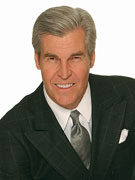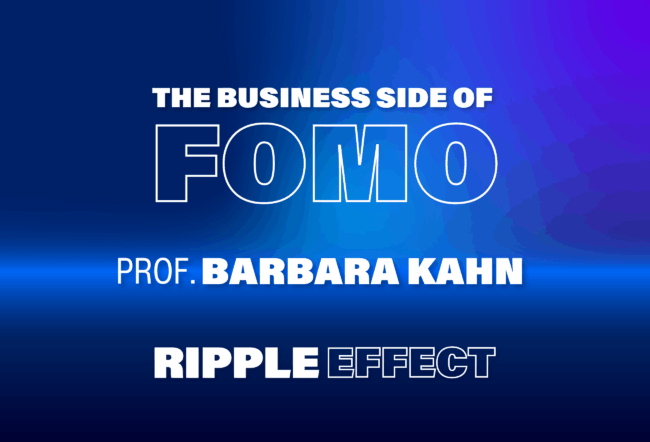When Macy’s CEO Terry Lundgren started out in retailing a generation ago as a Los Angeles-based buyer for the Bullock’s chain in southern California, he would often get a call from a manager for the chain in nearby Orange County requesting some specific merchandise for one of his stores. “I would solve the problem by putting the stuff he needed in my Volkswagen and driving it down there,” Lundgren recalled.
That experience, says Lundgren — who spoke at Wharton as part of the J.H. Baker Retailing Initiative lecture series — helped him shape a new vision of store regionalization for the Cincinnati, Ohio-based Macy’s retail chain. With sales of nearly $24 billion and 167,000 employees, Macy’s is currently the nation’s dominant chain of mid-to-high-end department stores.
Lundgren had come to realize that it was hard for Macy’s to offer a personalized touch to its shoppers when individual buyers and middle managers had to cope with servicing as many as 200 stores spread out across a region of up to 10 states. The result of this realization was the launch last February of the ‘My Macy’s’ initiative built around the concept of buyers and executives working with a small number of stores in 20 test areas. The goal is to take into account local tastes, increase same-store sales and cut costs.
According to Lundgren, in just a matter of months, “these initial stores have moved the needle on the sales line in this very challenging period of business — by 250 basis points,” or 2.5%, versus the control group of the rest of the country. In February 2010, the retailer is planning to expand My Macy’s to the remaining 49 metropolitan areas. This latest strategy follows a rapid growth spurt for Macy’s, which increased from 424 Macy’s nameplate stores in July 2005 toits current 810 stores.
The broad mission that Lundgren is taking on — seeking a personalized touch in stores even as he seeks to save hundreds of millions of dollars by centralizing other functions and expanding high-tech, computerized tracking of individual customers — might seem particularly daunting in light of the long recession that has hobbled most American retailers. But Lundgren said he decided in the wake of last year’s downturn-damaged Christmas season that there was no better time to make a number of major changes all at once.
“I said a year and a half ago — before the recession was even official — that [we were heading] into a challenging period, that we were going to take every [idea] that we ever thought was good … and we were going to implement them in 2009 — all of them, everything,” Lundgren said. He decided that making a series of significant changes — in the structure of the company and in store technology — over a more gradual period of time would only serve to “incrementally torture” his employees.
Despite slogging its way through the recession — Macy’s earned just $7 million on $5.2 billion in sales in the second quarter of 2009, partly due to charges for restructuring — the company is increasingly turning heads on Wall Street, largely because of the early success of the My Macy’s localization strategy. Earlier this fall, an analyst for Citigroup upgraded her rating on Macy’s to a “buy” and doubled her price target for Macy’s stock, writing that the “My Macy’s initiative will be a key driver of same-store sales to the upside for the company ahead.” The optimistic report came just as U.S. retailers in September reported their first year-over-year increase in sales in 13 months.
Cutting out Duplication
In a way, the My Macy’s strategy is a trip back to the future for the retailer and the 57-year-old Lundgren, who went to work for Bullocks in his native Southern California after he earned his undergraduate degree at the University of Arizona in 1974. The rapid growth of the company, which also operates 40 higher-end Bloomingdale’s, was fueled by two mergers — with Federated Stores in 1994 and with May Department Stores in 2005. As the consolidations moved forward, the combined company — eventually known simply as Macy’s, Inc. — absorbed a number of smaller chains that were considered local institutions, including Chicago’s Marshall Field’s, Kauffman’s in Pittsburgh, and Philadelphia’s Wanamaker. In response to a question, Lundgren acknowledged that some customers in those and other cities were furious at the change. “The big one was Marshall Field’s in Chicago. My head was on a stick and people were walking around the building with picket signs,” Lundgren joked, adding, however, that the reality some consumers didn’t want to face was that these aging retail companies had been performing poorly, typically trailing in their markets.
The opportunity to launch My Macy’s was undertaken in conjunction with a push at the start of 2009 to eliminate seven much larger regional districts that were an awkward carryover from the original consolidations. Lundgren said the districts created unnecessary duplication in some areas. “We went from seven divisions — that meant seven groups of buyers, seven groups of planners, seven marketing groups, in seven cities around the country” — down to just one, Lundgren said. The consolidation, announced in February, eliminated approximately 4,000 jobs and reduced Macy’s costs by about $400 million, but the CEO also moved to shift some of the eliminated positions over to the My Macy’s plan.
So far, My Macy’s has brought better results in the 20 original districts through localized decisions that account for roughly 10% to 15% of a store’s inventory. For example, in the Columbus, Ohio, region — according to the Columbus Dispatch newspaper — buyers began stocking more golf attire after noting its local popularity, not just on the links, but also in church on Sundays. In addition, the stores added more licensed Ohio State products as well as blue jeans, because of the city’s large college-age population. “In all these cities, [the My Macy’s staffers] were in all of these stores every other week, because they had only 10 stores to cover and their primary job was to see what those customers wanted — and then get it for them,” Lundgren said.
Despite the more localized approach, these stores are also reaping the advantages that Macy’s wields as a national brand. Most significantly, the sheer size and coast-to-coast reach of the retailer allows Macy’s to nail down exclusivity agreements with top fashion designers as well as a growing array of celebrities like Martha Stewart. “When we say, ‘We don’t do business with you today but we’re considering opening you in 800 stores,’ they just about drop off their chair and then they [say], ‘Well how do I do that — how do I even deliver that size order?'” Lundgren said, adding that the Tommy Hilfiger brand saw its American sales increase when it eliminated its other U.S. points of sale for an exclusive deal with Macy’s.
According to Lundgren, Macy’s works extensively with these designers and well-known pop-culture figures to make sure their items reach the retailer’s typical customer, which he described as a family earning between $75,000 and $200,000 a year. He cited the example of designer Rachel Roy, whose high-end, expensive blouses — some costing as much as $800 — won praise after Roy appeared on “The Oprah Winfrey Show.” “[Store executives would] say, ‘Well, we love your product, Rachel, but we can’t afford it — nobody can afford it — there are like eight people in America who can afford your blouses,'” Lundgren said. Macy’s hooked up Roy with a major apparel manufacturer, Jones New York, to develop a version of her blouses that uses less expensive materials and now retails for closer to $70. “They’re selling like hotcakes,” he noted.
Donald Trump Shirts
With celebrity-backed products, Lundgren said success or failure is usually not a function of their star-power as much as more mundane issues of quality and distribution. Actress/singer Jennifer Lopez came to Macy’s with great fashions — “she has spectacular taste,” he said — but her line brought major problems on the distribution side. On the other hand, the Donald Trump line of men’s shirts is a top seller because an experienced manufacturer, Van Heusen, delivers them, Lundgren added.
Despite its larger economy of scale, Macy’s must compete aggressively for exclusive deals in a market where those chains that appeal to a slightly lower income bracket sometimes have an edge. That was the case recently when well-known designer Liz Claiborne said it was ending its namesake brand’s relationship with Macy’s and moving the line to rival J.C. Penney. Lundgren didn’t address that — it was announced the day after his Wharton presentation — but he pointed out that since the economic meltdown of 2008, all retailers are adjusting to a new environment that is increasingly more cost-conscious.
Indeed, Macy’s executives noticed that consumer spending was slowing down gradually in the months before the September 20, 2008, collapse of Lehmann Brothers and the ensuing meltdown, and then saw a rapid falloff in shopping after that.”People just [decided] they were going to do with less…. Shopping and eating out and all those related” activities were affected by that, he said.
But Lundgren and Macy’s are hoping to mitigate some of the impact of more frugal consumers by using better technology to track their spending habits — with the goal of convincing them to spend more of their money at Macy’s every time they visit. In August, the company signed what it described as “a significant multi-year agreement” with dunnhumbyUSA, a technology-oriented consumer-insight consultant that is credited with turning around the fortunes of the British retailer Tesco.
According to Lundgren, retailing fashion goods is historically much less predictable than selling staples, such as food. But the work of dunnhumby, he added, will now allow Macy’s to better monitor the individual purchases of most customers. For example, the firm’s technology can track not only when to notify buyers of Clinique cosmetics that it’s time to re-stock on foundation — about every 10 weeks — but also reveals that Clinique buyers are purchasers of fashion jewelry as well. Macy’s can then market to them accordingly. Lundgren noted that Macy’s used to send out four different fall catalogues — mainly because of differing climates — but with dunnhumby’s help, it sent out 695 different versions, highly targeted to its customers.
“When you start sending a petite customer a large-sized catalogue, she says, ‘You know, you really don’t get me — you really don’t know who I am,'” said Lundgren. “So what My Macy’s means is that when you get something from us in the mail or when you walk into a Macy’s store, you say, ‘This is my Macy’s. This isn’t just a Macy’s for everyone.'”



